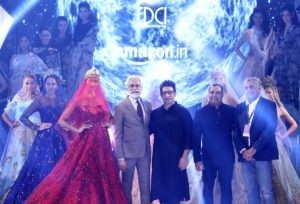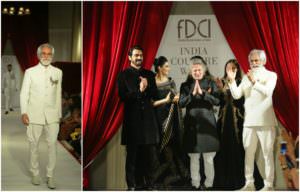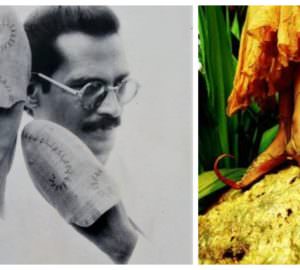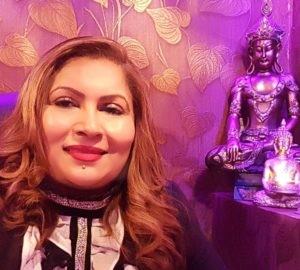Savvy, razor sharp, focused, hands-on as much as man-on-the-field, a consummate all-rounder entrepreneur-professional, watching Mr Sethi `work’ the fashion week is a master-class in multi-tasking leadership from the front. His attention to detail acute and never faltering, comrade to designers, an occasional dashing model on ramp for close design friends, and having had the pleasure and honour of working with him and watching his craft, a delightful good taste for Jackets that could make any style columnist singing straight to deadlines day after day.
His well decorated and multi-faceted accolade checklist speaks for his foresight and sense of opportunity to strike hot ahead of his peers. Setting up the Alliance Merchandising Company, a sourcing and buying agency in 1988, over the years Mr Sethi has represented elite designers and world’s reputed and well known stores including Anthropologie, Crate & Barrel, Armani Casa for their product development and buying out of India.
Since 2002, he has taken more than 25 Indian fashion designers to the International platforms, selling their products under their own brands to notable store like Selfridges, Golf & Co, Tsum, The Conran Shop, Habitat, Coin and others. To honour his contribution in the field of exports, he was awarded the Lifetime Achievement Award by Export Promotion Council for Handicrafts presented by the Union Textiles Minister of India. Later, in 2006, the Carpet Export Promotion Council conferred Mr Sethi with yet another Lifetime Achievement Award for his contribution to the carpet industry.
Philanthropist and humanitarian at heart, his not-for-profit organisation Parivartan provides free non formal education to children entrapped in child labour, besides being closely associated with Tamanna, Khushii, The Earth Foundation to support raise funds for children and adults with developmental and multiple disabilities. In recognition for his yeoman services, in 2010 Mr Sethi was awarded the Lifetime Humanitarian Award for outstanding contribution in the world of the differently-abled by Ms. Gursharan Kaur, wife of Prime Minister Manmohan Singh.
Serving as Board Member on NIFT, National Gallery of Modern Art, Ministry of Tourism and other fashion and lifestyle brands, Mr Sethi continues to make significant contribution by taking Brand India and Indian Designers to the International markets in the field of Fashion, Textiles and Handicrafts.
Agreeing during our interview that much more still needs to be done to position India and Indian Fashion and Textile industry as a foremost global player, Mr Sethi emphasis that young designers and fashion talent must display patience and persistence in choosing the long ardous top to the road to enjoy the view.

What is your overview of the fashion industry in India, its growth, strengths and flaws.
I think the Indian fashion industry, worth Rs 1,000 crores (textiles almost $108 billion), has grown by leaps and bounds, and has leapfrogged into the global arena by making its presence felt through the designers who have won an International Prize.
However, that is just a drop in the ocean. We also have designers who have managed to take the Indi out of India and given their ensembles a more global appeal, which has almost blurred the lines between Indian and Western giving rise to the endearing and universal ‘glocal’ silhouette. It has the elements of India but woven into the fabric in a subtle manner, covert rather than overt.
Our strength would undoubtedly be weaves, our textile heritage and the master craftsman, who do artisanal clothing. The only weakness I see is that we are a young industry so we need time to grow and evolve to leave our footprints in the sands of time.
Elaborate on FDCI’s role in attempting to bring together fashion talent and resources in a strategic, organised, focused vision plan.
The FDCI has strived to be the glue in more ways than one and also a bridge to be inclusive and boost not just sales, but also the vision of designers. We have tied up with The Ministry of Textiles to give our designers an impetus along with the Jakarta Fashion Week, and also the Italian Trade Commission. These collaborations help invigorate the industry along with giving it a fresh perspective. We also encourage fresh talent with the Elle First Cut, which has catapulted home-grown small units into financially sustaining businesses. Our plan is to take Indian fashion a notch higher with every fashion week that we organise or the India Couture Week that we boldly present with leading couturiers creating splendour. But fashion has a heart too, so we do a charity show for Tamana, with special kids where our designers create, participate and embolden them through the language of design.

`Make In India’ has gone beyond being a popular, trending hashtag. What is truly Make in India? How has it benefited the industry and its resources so far?
Mahatma Gandhi had called for abolishing all foreign made goods in 1905 and again when the Narendra Modi government came to power, it revisited that pledge hoping to resuscitate the languishing handloom industry. The textile industry is set to grow at an accelerated speed making it to $223 billion by 2021, which is a rather large share of the pie so the spotlight is on it. We as a fashion body have also dedicated a day to just this genre at our fashion weeks, hoping to give it the importance that is needed.
What is FDCI’s immediate game plan and long term future goals?
The short-term goal remains to keep it an integrated industry and help young designers find a toehold in this large spectrum, and help the established designers find a new voice to remain relevant in a space that is fast changing and evolving with the onslaught of the social media. The long-term goal is to take Indian fashion to a stage where it is self-sufficient and where the Made in India label is not just a sourcing ground, but holds water among a sea of international fashion houses.
What leadership qualities are required to translate ideas into execution mode?
Being organised I would say is the biggest virtue so that you have the liberty to edit in the end if you do not like anything. Also, being a team player and understanding and incorporating positive and meaningful feedback. Fortunately, I work with a really young, enthusiastic ,talented bunch that keep me motivated.
The task of sustaining fashion weeks commercially as a viable, sustainable platform. What issues do you battle with?
Sponsorships are a battle, as the economy faced tough times in the last year or so, which has affected all industries and fashion the most, with high GST.

Five fashion brands you love to wear and why?
I have been a big fan of Comme Des Garcons and have sported their shades quite often, it has been my favourite, not so much because of the shape, but the ideology of the Japanese designer, Rei Kawakubo.
I also like Yohji Yamamoto for his mixing up intellect with style, which makes it a heady combo. I have been an Armani fan so you will see me sporting their jackets. And of course, no one does it better than Rajesh Pratap Singh, his lines are always symmetrical just like his thought process. I also wear Ashish Soni and Rohit Bal, who are astounding menswear designers.
What is your advice to India’s budding fashion talent coming out of institutes around the country.
Be true to your craft, have patience and do not take the short cut. It may be a long and arduous road to the top, but when you get there you will enjoy the summit.
Like what you read, drop us an email at ethel@etheldacosta.com




1 Comment